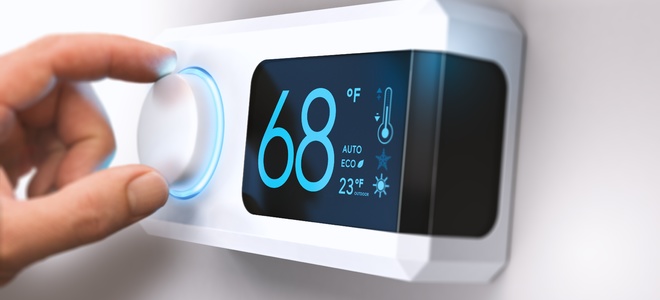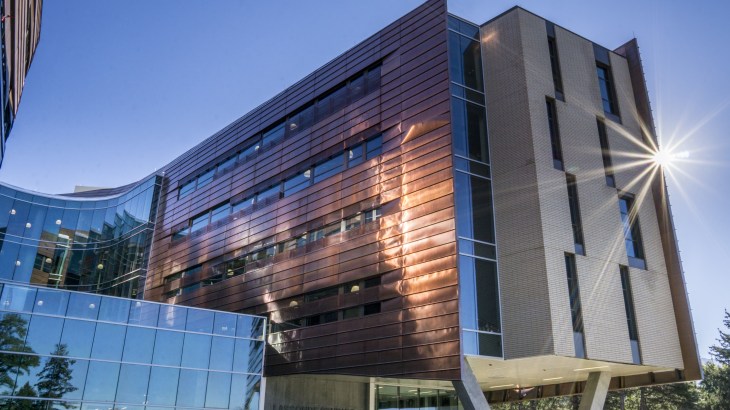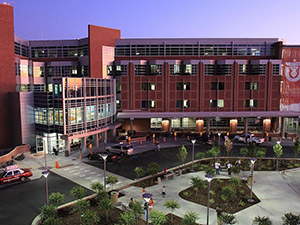Our Current Projects
Metering
Benchmarking for the Future
December 09, 2017 // By Matt Abbott, Chris Benson, and Abeni Czajkowski
Introduction: Metering on campus
 As a dense, urban University there is a clear need for a campus that operates like
a well-oiled machine. Energy conservation and its relationship with building performance
are consistently on the radar. In 2008, the University of Utah began metering utilities
at a building-by-building level. This was a big step forward from aggregating and
analyzing utilities at the campus level. The Facilities Sustainability & Energy Management
team works in collaboration with various specialists to migrate to this new form of
utility tracking. The team hopes to locate and resolve current issues with buildings
as well as provide additional data that can help create a more high-functioning and
informed campus for the future.
As a dense, urban University there is a clear need for a campus that operates like
a well-oiled machine. Energy conservation and its relationship with building performance
are consistently on the radar. In 2008, the University of Utah began metering utilities
at a building-by-building level. This was a big step forward from aggregating and
analyzing utilities at the campus level. The Facilities Sustainability & Energy Management
team works in collaboration with various specialists to migrate to this new form of
utility tracking. The team hopes to locate and resolve current issues with buildings
as well as provide additional data that can help create a more high-functioning and
informed campus for the future.
Breaking down the basics: What is metering and how does it work?
Just like an apartment complex or a house, each building on campus uses a variety of utilities to function. These utilities can include electricity, natural gas, water, as well as high-temperature hot water for heating and chilled water for cooling. While most buildings use the same types of utilities, their usage and demands vary drastically. Tracking utilities on a building-by-building level rather than a campus level have a multitude of benefits, most-importantly, providing information that benefits future campus projects. At the University of Utah, metering is done electronically, and there is a minimum of one meter per utility installed per building. This results in just a little over 1,000 meters on campus with about one-third of them transmitting real-time data. The data is sent to a metering software where it can then be collected, analyzed, and prioritized for action.
“After we have those numbers collected,” explains Dave Quinlivan, Associate Director of Utilities and Energy “we can start creating logical rules based on data. If we believe the measurement [of performance] was too high or too low, [compared to an industry standard, ]we can bring attention to it automatically. This is a process called benchmarking and is incredibly useful in answering the question of ‘where do we have opportunities.’”
The Benefits and Complications
Metering helps generate benchmark data which not only reveals current problems but can also be tracked over time to help prevent similar problems occurring in the future. There are physical and financial limits for potential improvements to the existing buildings on campus. Metering helps to identify smaller, more basic, problems and prioritize more costly or disruptive projects. For example, if the heating and cooling system meter readings for a building were double what was normal, or benchmarked, staff can look for a root cause, like a leak in a hot water valve. When a hot water valve leaks in one of the main mechanical systems, it can compensate with additional cooling – ultimately causing the building to use extra energy in both utilities for no noticeable impact to the zones that it serves. In this case, metering helps to identify a problem that requires a minor repair and in turn, saves the money.
 There are still complications that arise with metering, and it is important to recognize
that it is an ongoing process that will undoubtedly need to be refined. In a perfect
world, the data collected could be applied to a “normal” building to figure out if
utility use is “normal.” Unfortunately, it is not as simple as that. “Many complications
arise where we try and define a ‘normal’ reading for a certain value,” explains Matt
Abbott, Sustainability Program Administrator. “We want to meter a building specifically
for its use. We have incredible building diversity on campus – whether its age, size,
use, etc. and we do not want to compare the utility usage of a classroom to a hospital.”
There are still complications that arise with metering, and it is important to recognize
that it is an ongoing process that will undoubtedly need to be refined. In a perfect
world, the data collected could be applied to a “normal” building to figure out if
utility use is “normal.” Unfortunately, it is not as simple as that. “Many complications
arise where we try and define a ‘normal’ reading for a certain value,” explains Matt
Abbott, Sustainability Program Administrator. “We want to meter a building specifically
for its use. We have incredible building diversity on campus – whether its age, size,
use, etc. and we do not want to compare the utility usage of a classroom to a hospital.”
The University is still in the early stages of collecting utility data, and outside factors need to constantly be taken into account. “Values change based on on-campus events, season, weather, you name it,” says Quinlivan. “Rice Eccles uses hardly any energy but then when it’s time for a football game, we are going to see a huge increase in those numbers, and that is a significant factor that we must pay attention to when analyzing data.” Often, it is easy to forget how much energy is needed for certain operations to occur, so the goal is not to make saving money the main motivation. It is all about finding a balance between getting the biggest “bang for your buck” while maintaining a high-functioning and comfortable campus.
It takes a village: The Collaborative Process
Metering is not a one-person task. The work does not stop after the utility meters are installed, numerous collaborators ensure that utility meters are operating correctly and stay integrated and accurate. To correctly interpret the data in the larger database, it is important that the meters are both calibrated and accurately represent the spaces they serve, which is a big task on an ever-changing campus.
“This is an incredibly collaborative project, and there are so many key figures who deserve recognition for the hard and constant work being done,” says Chris Benson, Sustainability & Energy Manager “Dennis Denham and Phil Banza help to repair issues, coordinate with contractors, and integrate metering devices so that they can be read in metering software in real-time. Cynthia Garcia has been incredibly helpful in taking data from our software and applying it to our billing process. Dave Coe applies his knowledge of campus meters to investigate questions and identify causes of abnormal values. Bryan Cracroft has taken the initiative to lead the creation of new maintenance standards to ensure these meters remain calibrated and reliable long-term. Additionally, Matt Abbott has done amazing work managing the creation of the dashboard in the new Law Building which can display real-time metering data for that building. Bill Leach has been developing metering hierarchy diagrams to help everyone understand what measurements represent. This is complicated stuff and we could not be successful without everyone doing their part.”
The metering systems on campus are as diverse as they are complicated and while it is easy to focus on the “automatic” aspect of the devices, it is important to remember the bodies that work behind the curtain to make these processes real.
 A Look into the Future
A Look into the Future
Though the campus has been collecting data since 2008, it is difficult to set in stone the main benefits of metering for the future. “It is important to remember that not all campus projects are initially motivated by energy savings, although there are projects where it is easier to see the benefits of metering,” explains Benson. “We are still in early phases, but we want to highlight how much progress has been done and where we are headed.” The team is confident that the benefits of benchmarking through the merging process can help prioritize time and money not only for the current state of campus but the future as well. Additionally, the team can take the values collected through metering and apply them to a process called measurement and verification (M&V). M&V is just like it sounds, using utility meters you can measure the outcomes a project to verify original assumptions… quantifying successes and failures. This helps the Sustainability & Energy Management team with everything from project selection to project repayment. Without metering in place, we’d be in in the dark.
The University team will continue to install and integrate meters, along with their associated technologies, and anticipates that the process and the data will continue to evolve. In regards to the campus community, the Sustainability & Energy Management is hopeful that they can provide accurate and meaningful data that is both educational and actionable.
Stay tuned!
Explore More

 Metering
Metering Recycling at the University of Utah
Recycling at the University of Utah The Benefits of
The Benefits of Campus Energy Efficiency Projects
Campus Energy Efficiency Projects